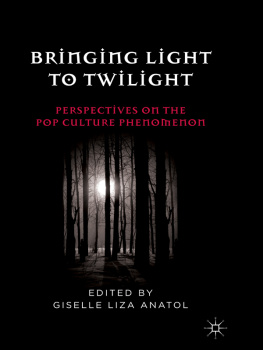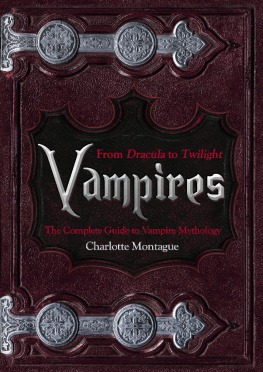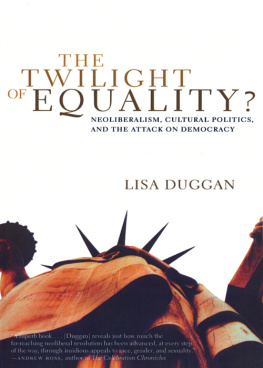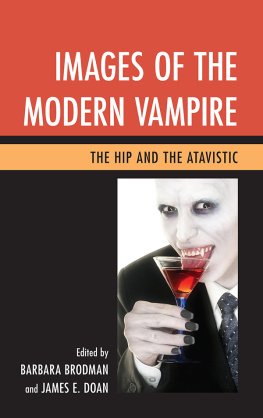BRINGING LIGHT TO TWILIGHT
BRINGING LIGHT TO TWILIGHT
PERSPECTIVES ON A POP
CULTURE PHENOMENON
EDITED BY
GISELLE LIZA ANATOL


BRINGING LIGHT TO TWILIGHT
Copyright Giselle Liza Anatol, 2011.
All rights reserved.
First published in 2011 by
PALGRAVE MACMILLAN
in the United Statesa division of St. Martins Press LLC,
175 Fifth Avenue, New York, NY 10010.
Where this book is distributed in the UK, Europe and the rest of the world, this is by Palgrave Macmillan, a division of Macmillan Publishers Limited, registered in England, company number 785998, of Houndmills, Basingstoke, Hampshire RG21 6XS.
Palgrave Macmillan is the global academic imprint of the above companies and has companies and representatives throughout the world.
Palgrave and Macmillan are registered trademarks in the United States, the United Kingdom, Europe and other countries.
ISBN: 9780230110670
Library of Congress Cataloging-in-Publication Data
Bringing Light to Twilight : Perspectives on a Pop Culture Phenomenon / Edited by Giselle Liza Anatol.
p. cm.
ISBN 9780230110670 (hardback)
1. Meyer, Stephenie, 1973 Twilight saga series. 2. Young adult fiction, AmericanHistory and criticism. 3. Vampires in literature. I. Anatol, Giselle Liza, 1970, editor compilation. II. Kramar, Margaret. Wolf in the woods. III. Meyer, Stephenie, 1973 Twilight saga series. Commentary on (work):
PS3613.E979Z63 2011
813.6dc22
2010043537
A catalogue record of the book is available from the British Library.
Design by Newgen Imaging Systems (P) Ltd., Chennai, India.
First edition: June 2011
10 9 8 7 6 5 4 3 2 1
Printed in the United States of America.
ACKNOWLEDGMENTS
THERE ARE MANY, many people to whom I owe thanks for helping me to complete this work, but I would like to express particular gratitude to the following: Lee Norton, for initially approaching me and having faith in the importance of this project, and all the people at Palgrave who helped in the final steps in the process; the contributors, for their insightful writing, but especially for their patience as I hit technological snags along the way; Kristen Lillvis, for her meticulous, intuitive, and speedy indexing work; the members of KUKCKim Warren, Ann Rowland, Nicole Hodges-Persley, and Tamara Falicovwho again provided invaluable feedback and emotional resources; the participants of the Twilight discussion group at UMKC, who helped me to see some of my own blindspots; Rachel Ewing, who allowed me a few extra days of quiet time in front of the screen; Dee Hurt, for her endless patience and quiet strength; Mylisha and Miles Hurt, who kindly waited as I read one more paragraph or wrote one more sentence before tending to their needs. And an extraspecial thank you to Miles for taking a bite for the team.
INTRODUCTION
GISELLE LIZA ANATOL
In a society that moves as fast as ours, where every week a new blockbuster must be enthroned at the box office, or where idols are fabricated by consensus every new television season, the promise of something everlasting, something truly eternal, holds a special allure.
Guillermo del Toro and Chuck Hogan
[E]very age discovers what in a work of art relates most to its own needs and desires, even if the artist himself was not consciously aware of all he created.
Lester Friedman
OF THE MYRIAD BOOKS, television programs, and films about vampires that have flooded US culture at the start of the twenty-first century, the most commercially successful to date is the Twilight series by Stephenie Meyer. Between the publication of the first novel, Twilight (2005), and June 2010, when the spin-off novel The Short Second Life of Bree Tanner was released, the four-volume saga had sold more than 100 million copies.
The Twilight novels have been translated into thirty-seven languages, and their popularity earned Meyer the title of USA Todays 2008 Author of the Year, as well as numerous comparisons to J.K. Rowling. Twilight might very well be the most significant childrens literature series since the Harry Potter novels: as of September 2010, the four novels had spent 162 weeks on the New York Times best-selling [childrens series] list, accompanied by P.C. Cast and Kristin Casts House of Night vampire novels, Therefore, when I was offered the opportunity to gather a diverse group of writers to delve into the Twilight books, I jumped at the chance.
Bringing Light to Twilight: Perspectives on a Pop Culture Phenomenon makes no claims for justifying the aesthetic quality, widespread acclaim, or adult readership of Meyers fiction; rather, its primary goal is to take a rigorous analytical view of the booksone that can be appreciated by those inside and outside the academy. The contributors and I hope that although most (but not all) of these chapters have been produced within university settings, they will inspire conversations across a variety of audiencesteenagers and senior citizens, Mormons and Buddhists, college professors and junior high school students, stay-at-home moms and Marxist theorists. The Twilight series needs interrogation: it should not be rejected as simply pulp, pop culture, or the latest fad; neither should it be glorified as inviolable, sacred object. Whether Meyers books serve as time-passers, a vehicle for escapism, literacy training, exercise for the imagination or rational thinking, conditioners of social norms, models for dealing with problems, a means for improving a cranky or despondent mood, and/or a cultural artifact, they can affect and sway their readers, and this volume uncovers some of the ways this process is accomplished.
When the chapters for this collection were originally compiled, only one other critical exploration of Meyers novels was readily available: Twilight and Philosophy: Vampires, Vegetarians, and the Pursuit of Immortality, edited by Rebecca Housel and J. Jeremy Wisnewski (2009). Since that time, however, many other works have come to light. Twilight and History, by Nancy Reagin, provides young adult readers with historical contexts for various characters in the series. Approaching the novels from a religious standpoint, both The Twilight Phenomenon: Forbidden Fruit or Thirst-Quenching Fantasy? by Kurt and Olivia Bruner and Touched by a Vampire: Discovering the Hidden Messages in the Twilight Saga by Beth Felker Jones target older readersparticularly the parents of Twilight teens. Bitten by Twilight: Youth Culture, Media, & the Vampire Franchise, edited by Melissa Click, Jennifer Stevens Aubrey, and Elizabeth Behm-Morawitz, focuses on the cultural, social, and economic aspects of the series. We anticipate that Bringing Light to Twilight will enter into scholarly conversation with these texts as well.
BATTY FOR BEAUTIFUL VAMPIRES
At the end of the first decade of the twenty-first century, there are few adults in the English-speaking world who have been untouched by the most recent surge of vampire narratives. The term First Wave might be used to describe some of the earliest fareBritish popular literature of the nineteenth century (although the British by no means invented the genre)writing such as John Polidoris short story The Vampyre (1819), James Malcolm Rymers penny-dreadful
Next page







